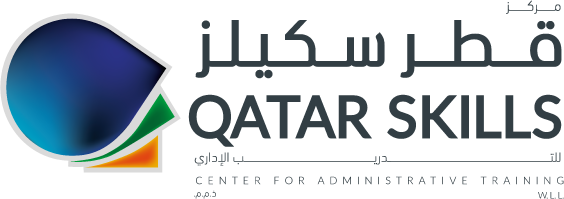array (
'course-city' =>
array (
0 => 48,
177 => 90,
226 => 77,
336 => 106,
371 => 107,
445 => 72,
486 => 108,
528 => 109,
551 => 110,
582 => 111,
604 => 71,
639 => 112,
673 => 78,
708 => 113,
798 => 70,
818 => 114,
875 => 115,
877 => 127,
910 => 116,
1054 => 117,
1226 => 118,
1324 => 91,
1402 => 119,
1492 => 120,
),
'course-language' =>
array (
0 => 49,
706 => 126,
),
'types' =>
array (
0 => 81,
),
'course-category' =>
array (
0 => 67,
127 => 64,
128 => 65,
129 => 58,
130 => 59,
131 => 66,
132 => 125,
133 => 60,
134 => 61,
135 => 123,
136 => 46,
137 => 51,
138 => 62,
139 => 85,
140 => 83,
141 => 76,
144 => 99,
145 => 57,
146 => 63,
149 => 97,
152 => 98,
157 => 124,
158 => 103,
159 => 104,
160 => 105,
161 => 55,
162 => 75,
163 => 53,
164 => 56,
172 => 100,
174 => 101,
178 => 122,
191 => 121,
240 => 102,
),
'course-type' =>
array (
0 => 73,
),
)Shaft Alignment, Dynamic Balancing Techniques & Measuring Tools
Course Overview:
Machines that have been precision-aligned run longer, and cost less to run. Alignment greatly reduces the life of bearings, seals, shafts, and couplings. Also, Machines that have been precision-balanced run longer, and cost less to run. Unbalance causes fatigue and reduces the life of bearings and can make looseness and resonance conditions far worse. This course will equip you with the knowledge and skills so that you can use a vibration analyzer/balancer or a simple sheet of graph paper and protractor, and balance a machine – without even having to remove it from the plant. You will learn how to recognize unbalance and set up the balance job for a successful balance.
This course will equip you with the knowledge and skills so that you can use a dial indicator tool or laser alignment system to precisely align two components together. You will learn how to recognize misalignment and successfully set up the alignment job. After reviewing the important reasons for performing shaft alignment, we will discuss the pre-alignment checks and corrections, including how to identify and correct the soft foot. The operation of dial indicators, and cover the rim-face method and the reverse-dial method will also be discussed. Not only will we explain and demonstrate the process, but also how calculations are performed will also be discussed.
Laser alignment systems will be discussed; the benefits, basic theory of operation, and tips and techniques for successful use. And finally, there will be a discussion on how to move the machine and deal with all the problems that you are bound to encounter at some stage.
Course Objectives:
Upon completion of this course, the trainees will be aware and understanding of the following:
- Providing the Participants with Good Information on how Shaft Misalignment causes Failures in Equipment’s.
- Explain how they work and understand how to measure run out on mechanical couplings and machinery shafts.
- Providing the participants with a thorough understanding, brief about construction, and improving their capabilities and skills required to identify and measure misalignments in different machines and their causes and how to correct or monitor them.
- Having a detailed understanding of Advanced Time and Frequency Analysis Techniques and having acquired knowledge of Accurate Diagnosis of Antifriction Bearings.
- Gaining Knowledge of measuring & correcting Vertical and Horizontal Plan misalignment aligning Vertical mounted Equipment.
- Understating of practices in measuring and correcting “Soft Foot” problems and measuring run-out on Alignment demonstrators.
Who should attend?
Maintenance Engineers, Highly Qualified Technicians who work in the Maintenance Department to give them the Practical Knowledge to achieve accurate alignment and balancing for the Shaft of Rotating Equipment Machinery.
Course Contents:
Module (01) Soft Foot Checks and Corrections
- Different types of Soft Foot
- Rocking Soft Foot
- Short Foot – Parallel Air Gap
- Even Foot
- High Foot
- Bent Foot
- Squishy Foot
- Induced Soft Foot
Module (02) Importance of Soft Foot
- Why is Soft Foot Important?
- Shaft Fatigue
- Bearing Distortion
- Impact on the Alignment Task
Module (03) Testing for Soft Foot
- Testing for Soft Foot
- Taking Soft Foot Measurements
- Recording Results
- Using Dial Indicators to measure Soft Foot
Module (04) Correcting Soft Foot
- Correcting Rocking Soft Foot
- Shortcut number One: The Casanova Method
- Shortcut number Two: The 80% Rule
- Using Feeler Gauges
- Using a “Stair” of Shims
- More Complex Shim Patterns
- Detecting and Correcting induced Soft Foot
- Mysterious Soft Foot
Module (05) the Rim-Face Dial Indicator Method
- Accuracy Issues
- Setup Problems
- Axial End-Float
- Rim-Face Measurement Procedure
- Compensate for Bar Sag
- Alternative Method
- Determine the Alignment Corrections
- Performing the Calculations
- Computing the Offset
- Computing the Angularity
- Computing feet movements
- Shim calculations
- Move calculations
- Example calculations
- The graphical method
Module (06) the Reverse Dial Method
- Reverse Dial Procedure
- Compensate for Bar Sag
- Performing the Calculations
- Computing the Offset
- Computing the Angularity
- Computing feet Movements
- Shim and move Calculations
Module (07) Laser Alignment Systems
- The basic components of a laser alignment system
- Benefits of laser alignment systems over dial indicators
- How do laser alignment systems work?
- Using a Prism-Return Beam Method
- Beam Splitter – Single Beam Method
- Twin Emitter/Detector Pairs – Dual Beam Method
- Using a horizontal beam and a vertical detector
Module (08) Performing Laser Alignment Measurements
- Performing the measurements
- The 3:00-12:00-9:00 method
- Swept measurements
- Getting the results
- Aligning spacer shafts or jackshafts
- What if you can’t rotate one shaft?
- What if the shaft can’t be rotated easily?
- What if you can’t rotate either shaft?
- Limitations of laser systems
- Backlash
- Heat, steam, sunlight, water vapor
Module (09) Base Bound and Bolt Bound
- Base bound
- Machine the feet
- Moving the machine horizontally
- Using a dial indicator to measure the horizontal move
- Using shims to measure horizontal machine moves
- Bolt bound
- Turn-down the bolts
- Open the bolt holes of the machine feet
- Moving the stationary machine
- Drill new holes
Module (10) Dynamic and Thermal Movement
- Which machines will be affected?
- Thermal effects
- Manufacturer’s supplied offsets
- Sources of heat
- Internal or system sources of heat
- External sources of heat
- Mechanical effects
- Pipe strain
- Oil wedges
- Jacking fluid
- Catenary sag
- Foundation changes



